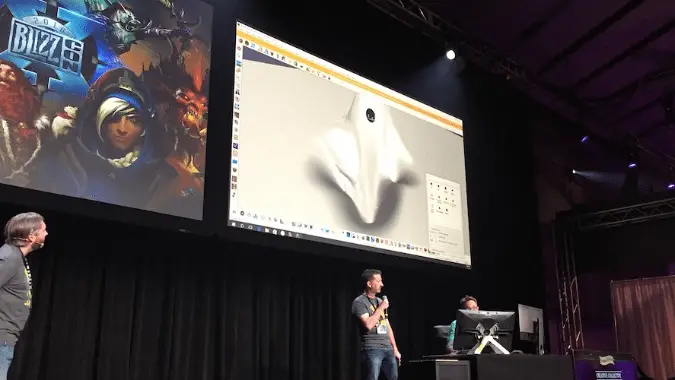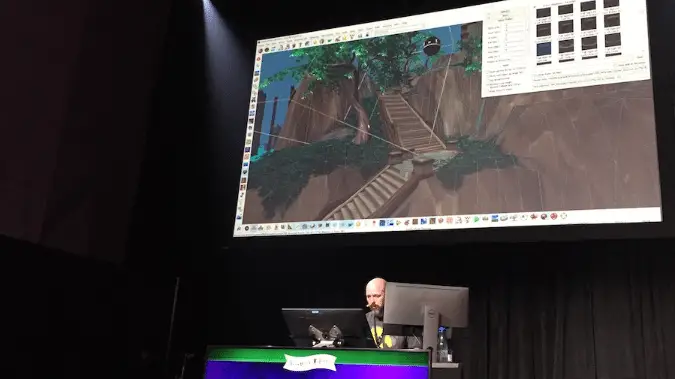WoW’s level designers on telling stories with landscapes
Who would you say the most important character in World of Warcraft is? Maybe you’re thinking about Illidan or Khadgar or Sargeras, but really it’s Azeroth itself. The locations we explore help tell the story, and getting that story across is the job of WoW’s level designers.
At BlizzCon, we got a look at the tools Blizzard uses for level design (the first time they’ve been seen outside of Blizzard HQ). We had the chance to watch designers Matt Sanders and Ely Cannon creating zones from scratch: Matt building an island with a classic Warcraft-style Human base, while Ely built a magical academy for Kaldorei children.
The two areas are very different, and that’s the point: the environment being created tells us the story of its creators and the zone at large. Beyond the difference between Elven and Human architecture, there are major differences in architecture within a culture. Consider Darnassus and Suramar for example: while both zones offer representations of Elven culture, you know right away that a very different type of character lives here. The environment we travel through may seem like a basic thing, it sets the stage for all of those big lore characters to act in.

Using the design tool, everything starts out as a blank, empty canvas. It’s literally an empty white space that the designers mold into the basic landscape. When trying to figure out which areas are pathable, the design tool has a mode that shows areas players can navigate, coloring terrain in red and green. From there, designers can adjust the terrain to pull things up or down to let players navigate from one point to the next or not. Level designers work to lead you to these paths, using textures, lighting, and other design elements that you can move through the space in this way — and they may put up fences or walls so players don’t accidentally auto-run over cliffs.
The designers begin with a “demo zone,” which is a proof of concept. It has the basic land masses blocked out with textures. The textures are painted on, layering multiple textures with a pressure sensitive tablet — just like painting in Photoshop — to give a basic sense of the zone. Trees, buildings, and other props can be dropped in as needed, and then adjusted to place them just so.

Afterwards, they can fine-tune the geometry — Ely mentions tweaking each of the vertices to get the shapes just right — and perfecting the setting. We see a lot of Ely moving and re-angling trees, placing rocks at just the right angle, and lining up walls to match up perfectly with the terrain.
When quest designers get involved, the zone may change. Level designers and quest designers work closely together to build the landscape: a quest might send you to certain areas, and then level designers need to be sure players see a clear path to the area. Even in this big fantasy world, it’s important to feel real. For example, Matt picks the style of trees that go in different parts of his island, with evergreens up in the mountain and perennial trees around the buildings. The stories of the people in the zones is just as important: Ely comes up with stories about the people who might live there and adds details to tell those stories, like a wagon abandoned in the middle of a farm. Every item placement is there to tell the story of the zone, even if it’s not related to the bigger story or the quests.
Think about Sir Finley Mrrgglton’s camp in Stormheim, complete with a tiny stuffed Murloc inside his tent. It’s not necessary to tell the story of the zone, but it adds character to Sir Finley. These details are the finishing touches, adding fidelity.
All of this represents months of work — and for something players may not even think of as they move through it every day.
Check out the gallery above for a more complete look at Blizzard’s level design tools and how WoW’s level design team has built the Azeroth we know and love today.
Please consider supporting our Patreon!
Join the Discussion
Blizzard Watch is a safe space for all readers. By leaving comments on this site you agree to follow our commenting and community guidelines.
 @faience
@faience




